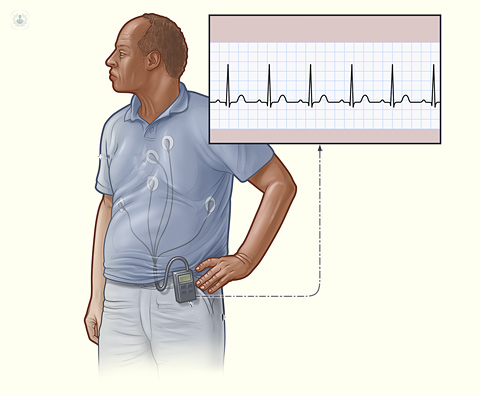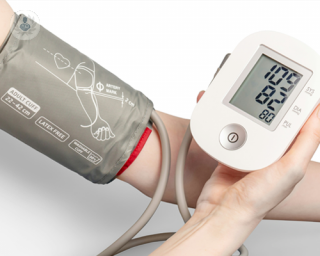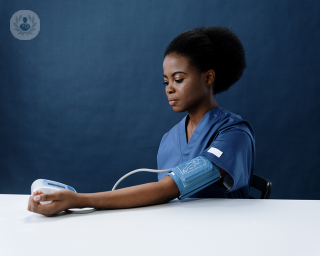Blood pressure test
Dr Sukhjinder Nijjer - Cardiology
Created on: 11-13-2012
Updated on: 03-30-2023
Edited by: Karolyn Judge
What is a blood pressure test?
A blood pressure test is performed to measure your blood pressure over a prolonged period of time, usually 24 hours. The aim is to monitor your blood pressure and to identify at what times, or during which activities, sudden changes in blood pressure occur.

What does a blood pressure test involve?
A blood pressure monitoring test involves wearing a blood pressure cuff fitted with a measuring device that records blood pressure levels throughout the day, even while you sleep, if necessary.
The cuff is placed on your least dominant arm, and is then connected to a small device, similar in size and shape to a radio cassette, which can be attached to your belt or carried in your pocket. The device can be perfectly concealed under clothing and you must wear it at all times and perform your normal activities. The device reads your blood pressure every 15 to 20 minutes during periods of activity and every 30 minutes during sleep.
When the test is complete, the device is removed and the frequencies recorded are read by a computer. The cardiologist usually extracts a graph from these frequencies for observation.
Why is a blood pressure test performed?
The aim of the blood pressure monitoring test is to monitor your blood pressure throughout a normal day.
- It is usually indicated for people with suspected high blood pressure, but for whom this cannot be confirmed at the time of consultation, or to follow up on people with high blood pressure who are difficult to monitor or who are taking medication that may affect their blood pressure.
- It is also performed to assess the effectiveness of treatment for blood pressure problems.
- In people with episodic hypertension, or highly variable blood pressure, this monitoring is also done to see what times, or which activities, affect their blood pressure.
- In addition to people with hypertension, people with hypotension (low blood pressure) may also need blood pressure monitoring.
Preparing for a blood pressure test:
No specific preparation is required for this test, since the aim is to record your activity on a normal day. Therefore, you should perform the same activities as usual, take your usual medication and avoid strenuous physical exercise or activities that make you particularly nervous or stressed. The cardiologist may also ask you to write down the medications you take and the activities you do on the day of the test.
What does a blood pressure test feel like?
Blood pressure monitoring is a completely painless test, during which you will only feel the discomfort of wearing the monitoring device with the cuff on your arm all day and night.
Meaning of abnormal results
If abnormal results are obtained from the blood pressure monitoring test, this means that your blood pressure is irregular, or is at abnormally high levels (hypertension) or abnormally low levels (hypotension). In any case, the cardiologist will analyse the results, identify the cause and prescribe a treatment for stabilising your blood pressure.







